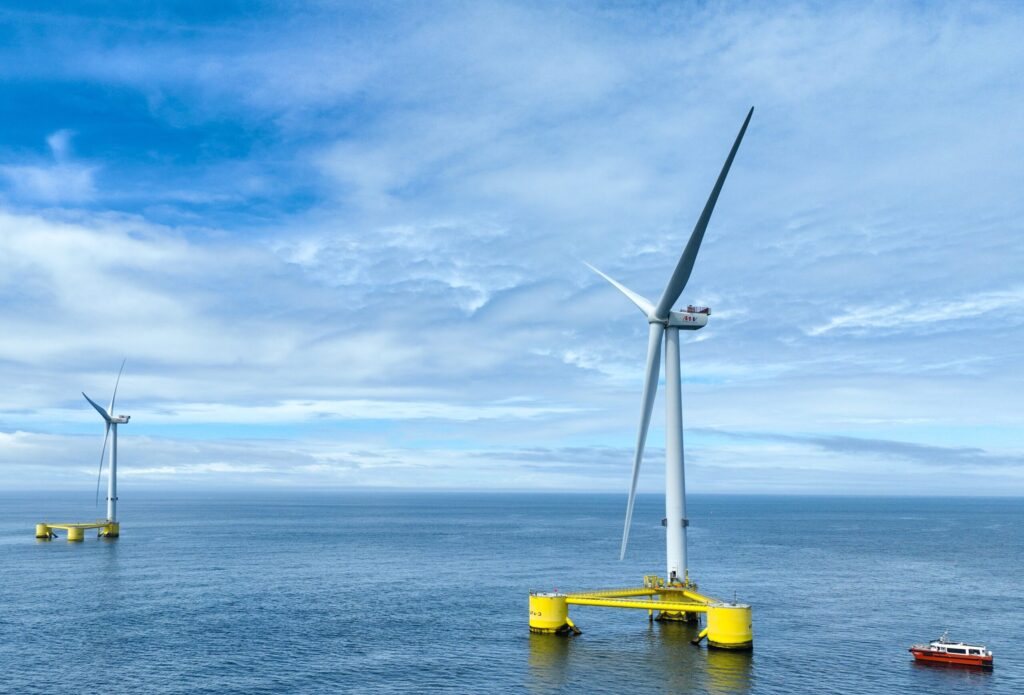By Ralph Torr, Programme Manager for the Floating Offshore Wind Centre of Excellence
Floating offshore wind is an essential ingredient for the UK’s energy future. Only by pushing installations into deeper waters will we be able to meet our net-zero targets for renewable energy output by 2050
It can also be a catalyst for a robust global economic recovery as we exit the COVID-19 pandemic. Floating wind will bring investment and support direct and indirect jobs (fixed-term jobs in the project development, construction and decommissioning stages and permanent or long-term jobs in the operations stage), often in economically and socially deprived areas. In the UK alone, studies have shown that floating wind could create 17,000 jobs and generate £33.6 billion for the UK economy by 2050.
Similarities between the oil and gas and floating wind industries could also play a key role in supporting a sustainable energy transition. Floating offshore wind can absorb and maintain facilities, skills and know-how in the oil and gas industry, and see these redeployed to deliver net-zero by 2050.
So how is the UK enabling the development of a vibrant, indigenous floating offshore wind industry?
ORE Catapult has established the Floating Offshore Wind Centre of Excellence (FOWCoE) to develop an internationally recognised initiative to reduce the cost of energy from floating wind. The FOWCoE has developed an initial core work programme across four workstreams:
- Technology development
- Supply chain and operations
- Development and consent
- Delivering Net Zero
Technology Development
Much of the technology proposed for deployment in floating offshore wind projects is not new. It is adapted or evolved from other applications, primarily from fixed-bottom wind and the oil and gas industry. Whilst the principles of these technologies remain the same, the specification, operating conditions, scale and volume for deployment in floating offshore wind may differ.
However, this technology development cannot be thought of in isolation. It also requires consideration of how the technology will be commercialised and delivered into projects in sufficient volumes by a competitive and capable supply chain.
This workstream will focus on the late-stage commercialisation, testing, validation and benchmarking of technologies for floating offshore wind, with a specific focus on strengthening the UK supply chain.
Supply Chain and Operations
Critical to the success of the floating offshore wind industry will be access to a capable, competent and competitive supply chain.
A key element of creating this strong supply chain is developing enabling infrastructure and establishing supply chain clusters. These are critical to ensuring that all required infrastructure, products, services, skills and experience are supported to work collaboratively to support the safe, efficient and cost-effective construction, operations and maintenance and decommissioning of projects.
This workstream will focus on growing and developing the supply chain to ensure commercial-scale project developers have access to a robust supply chain. Early work will include activities relating to enabling infrastructure, clustering, cross-sector collaboration and raising awareness of floating offshore wind supply chain opportunities.
Development and Consent
Between 2020 and 2030, we expect to see a significant increase in UK floating offshore wind projects– from small demonstrator to full-scale commercial projects. Key to ensuring the floating offshore wind industry in the UK can scale-up in a rapid and sustainable way is having an efficient, timely, transparent development and consenting process, which retains the required levels of rigour and diligence to support appropriate development.
This FOWCoE workstream will identify and address the risks to timely, efficient and appropriate development and consenting of floating offshore wind projects in the UK. Activities to address this will be delivered through a range of collaborative partnerships with existing and new programmes.
Delivering Net Zero
If the UK is to meet and surpass the Committee on Climate Change’s ambitious target of 75GW of offshore renewable energy by 2050, floating offshore wind is essential. This, therefore, requires investment in facilities and the supply chain. The FOWCoE will unlock the wind power potential of deep-water sites across the UK over the coming years to achieve net-zero targets.
In addition to adding to the low carbon generation capacity in the UK, floating offshore wind has a range of other benefits, including supporting the energy transition from fossil fuels to renewable energy.
This workstream focuses on understanding the role of floating offshore wind in future energy systems, specifically its contribution to achieving net-zero and more broadly its role in the successful energy transition.
To find out more information on the Floating Offshore Wind Centre of Excellence and the work we are doing in this area, catch us at Floating Offshore Wind 2020.
Photo of the WindFloat Atlantic project courtesy of Principle Power/Ocean Winds




